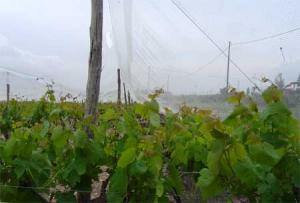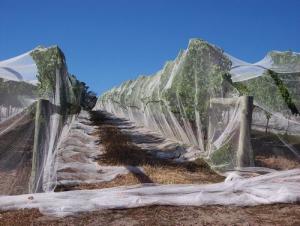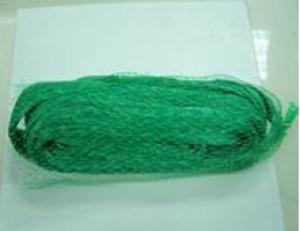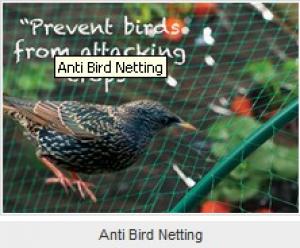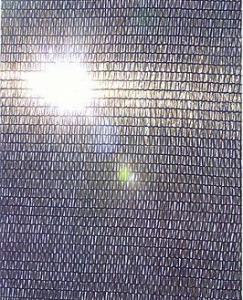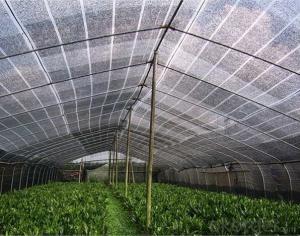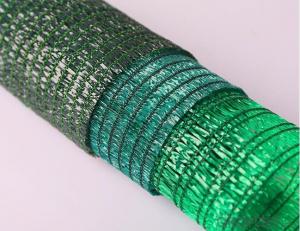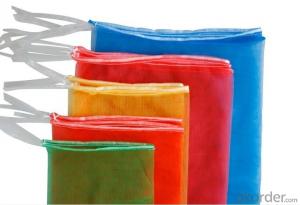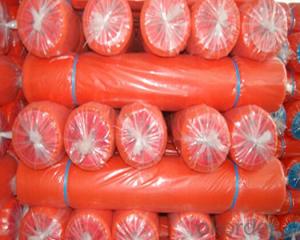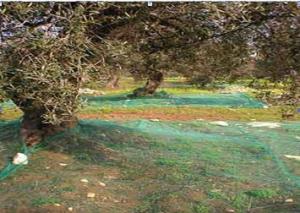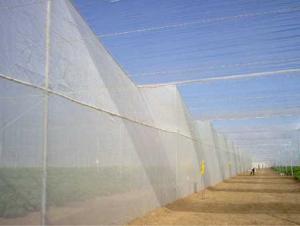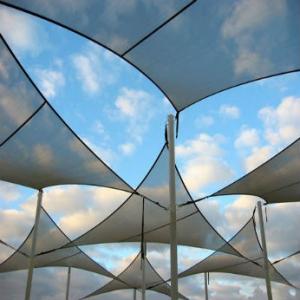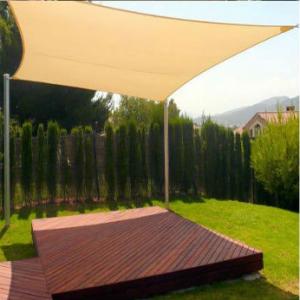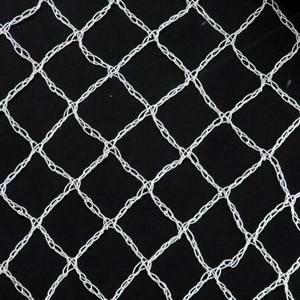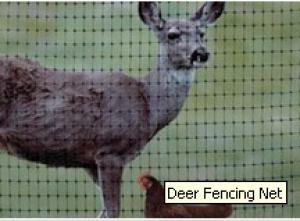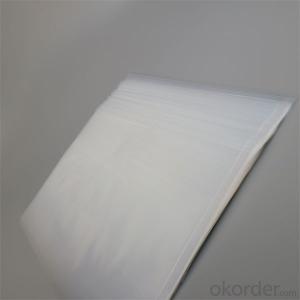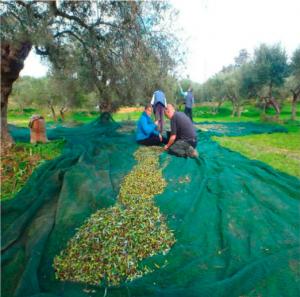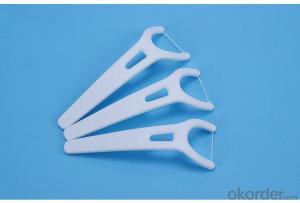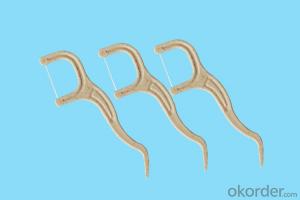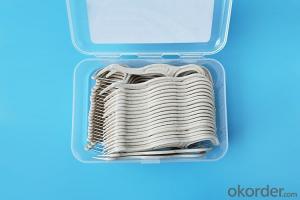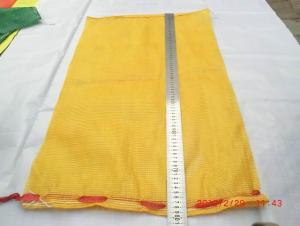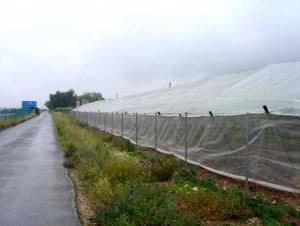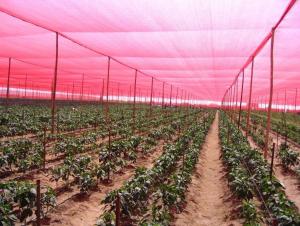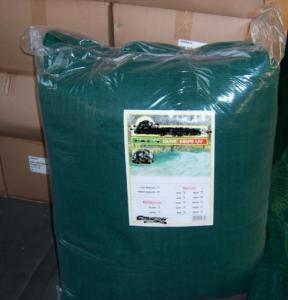Extruded Anti-bird Net
- Loading Port:
- China Main Port
- Payment Terms:
- TT or L/C
- Min Order Qty:
- 2000kg m²
- Supply Capability:
- 500t/m m²/month
OKorder Service Pledge
OKorder Financial Service
You Might Also Like
Anti-Bird Net
Introduction OF Extruded anti-bird Net :
It is extruded by High-density polyethylene (HDPE)
Specifications of Extruded anti-bird Net :
Material base fabric | Fabric Weight | Uv. Content | Temperature range |
HDPE | 8gsm and 35gsm
Standard weight:8gsm, 10gsm, 35gsm
| 0.3% or 0.5% | -40 ~ +80℃ |
Mesh Size: 15X15cm,12x12cm , 14x14cm
Weight: 8g/m2, 10g/m2, 35g/m2 ,etc.
Size: 2X4m, 2X5m, 2X10m, 4X6m, 4X12m, 2x100m, 1.7x500m, 1.7x1000m, 2x1000m
Color: green, white, red, etc.
Using of Extruded anti-bird Net:
It is widely used as protection net against bird and other animals.
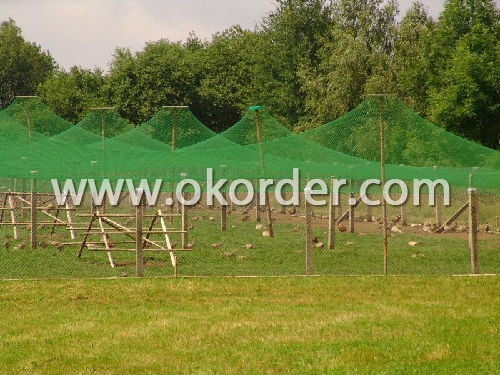
Packing of Extruded anti-bird Net:
in roll into plastic woven bag with labels inside, then into carton.

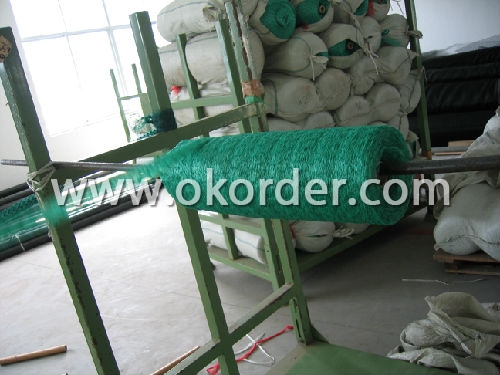
- Q:Are plastic nets suitable for animal enclosures?
- No, plastic nets are not suitable for animal enclosures as they can pose a risk to the animals. Plastic nets can easily tear or break, potentially allowing animals to escape or get injured. Additionally, animals may chew on the nets, leading to ingestion of plastic and potential health issues. It is recommended to use more durable and animal-friendly materials, such as metal or wire mesh, for constructing animal enclosures.
- Q:Are plastic nets customizable in terms of size and shape?
- Yes, plastic nets are customizable in terms of size and shape. They can be manufactured to various dimensions and configurations to suit specific requirements and applications.
- Q:How do plastic nets provide support for vertical gardens?
- Plastic nets provide support for vertical gardens by acting as a framework or structure to hold the plants in place. The netting is stretched horizontally across a wall or structure, allowing the plants to grow vertically and be trained or attached to the net. This provides stability, prevents the plants from falling or bending under their weight, and allows for better air circulation and light exposure.
- Q:How do plastic nets provide support for fruit trees?
- Plastic nets provide support for fruit trees by acting as a physical barrier that holds the weight of the growing fruits, preventing branches from breaking or bending under the load. They also protect the fruits from pests and birds, reducing the risk of damage and loss.
- Q:Are plastic nets used in the manufacturing of bags?
- Yes, plastic nets are commonly used in the manufacturing of bags.
- Q:How do plastic nets provide protection against dust?
- Plastic nets provide protection against dust by acting as a physical barrier that prevents dust particles from passing through. The fine mesh of the net traps the dust particles, preventing them from entering the protected area.
- Q:Can plastic nets be used for shade protection?
- Yes, plastic nets can be used for shade protection. They are lightweight, durable, and can effectively block sunlight, providing shade and protection from harmful UV rays. Plastic nets are commonly used in agriculture, construction, and outdoor recreational areas for creating shaded areas.
- Q:How do plastic nets compare to rubber mesh materials?
- Plastic nets and rubber mesh materials have some similarities but also notable differences. Both materials are commonly used for various applications such as packaging, sports equipment, and industrial purposes. Plastic nets are typically made from synthetic polymers like polyethylene or polypropylene, while rubber mesh materials are usually composed of rubber compounds. In terms of strength and durability, plastic nets tend to be more resilient and resistant to wear and tear compared to rubber mesh materials. Plastic nets are also often more lightweight and have higher tensile strength, making them suitable for applications that require higher load-bearing capacity or protection against impact. On the other hand, rubber mesh materials offer greater flexibility and elasticity, allowing them to conform to irregular shapes more easily. Rubber mesh can stretch and bounce back to its original form, making it ideal for applications that require shock absorption or impact resistance, such as protective padding or sports equipment. Additionally, plastic nets are generally more cost-effective and easier to mass-produce compared to rubber mesh materials. Plastic nets can be manufactured in various sizes and configurations, providing versatility and customization options. Rubber mesh materials, however, are usually more expensive and require specialized manufacturing techniques. Ultimately, the choice between plastic nets and rubber mesh materials depends on the specific requirements of the intended application. Factors such as strength, flexibility, cost, and manufacturing feasibility need to be considered to determine the most suitable material for the given purpose.
- Q:How do plastic nets perform in windy coastal areas?
- Plastic nets generally perform well in windy coastal areas as they are lightweight and have a flexible structure that allows them to withstand strong winds. Additionally, their open mesh design helps to reduce wind resistance, preventing them from being easily blown away. However, it is important to ensure proper installation and maintenance to ensure their effectiveness in such environments.
- Q:Are plastic nets suitable for packaging household appliances?
- Yes, plastic nets are suitable for packaging household appliances. They provide a protective barrier and offer stability during transportation and handling. Additionally, they allow for proper ventilation and visibility of the product, making them an ideal choice for packaging appliances.
1. Manufacturer Overview |
|
|---|---|
| Location | Zhejiang, China |
| Year Established | 2002 |
| Annual Output Value | US$ 10 Million - US$ 50 Million |
| Main Markets | North America Safety Fence, BOP Netting 5.00%; South America Safety Fence, Insect Screen, BOP Netting 8.00% ; Eastern Europe Safety Fence, Insect Screen, Anti-bird Netting, BOP Netting 9.00% Southeast Asia Safety Fence, Insect Screen, Anti-bird Netting, BOP Netting 5.00 % Africa Safety Fence, Insect Screen 1.40% Oceania Safety Fence, BOP Netting, Gutter Guard 9.60% Western Europe Safety Fence, Insect Screen, Anti-bird Netting, BOP Netting, Gutter Guard 34.00% |
| Company Certifications | GBT19001-2000 -ISO9001:2000 |
2. Manufacturer Certificates |
|
|---|---|
| a) Certification Name | |
| Range | |
| Reference | |
| Validity Period | |
3. Manufacturer Capability |
|
|---|---|
| a)Trade Capacity | |
| Nearest Port | Ningbo, China |
| Export Percentage | 91% - 100% |
| No.of Employees in Trade Department | 3 |
| Language Spoken: | English; Chinese |
| b)Factory Information | |
| Factory Size: | Above 100,000 square meters |
| No. of Production Lines | Above 10 |
| Contract Manufacturing | OEM Service Offered; Design Service Offered |
| Product Price Range | High; Average |
Send your message to us
Extruded Anti-bird Net
- Loading Port:
- China Main Port
- Payment Terms:
- TT or L/C
- Min Order Qty:
- 2000kg m²
- Supply Capability:
- 500t/m m²/month
OKorder Service Pledge
OKorder Financial Service
Similar products
New products
Hot products
Hot Searches
Related keywords
